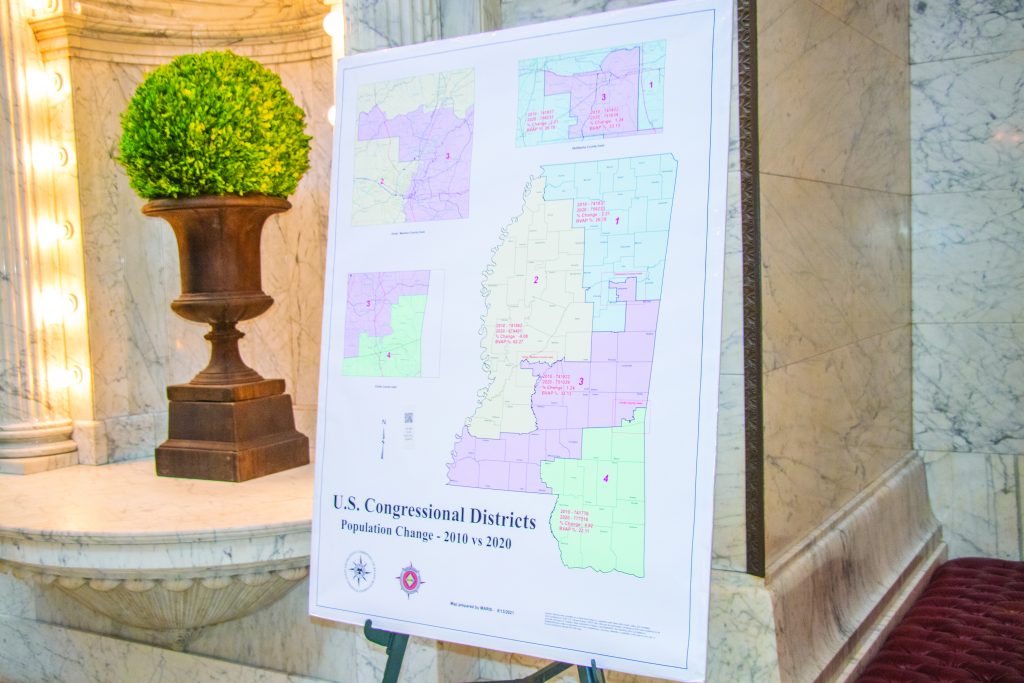Republicans are taking full advantage of their supermajority and Mississippi’s 2nd congressional district is at stake. A debate brews at the state capitol about a new redistricting bill passed in the House of Representatives. The 2nd district covers the majority of the Mississippi Delta but, with the 2020 Census reporting a decline in population, lawmakers were looking to expand it to compensate for the loss. Over the past 10 years, nearly 65,000 people left the district.
The “Magnolia 1” Congressional redistricting plan passed by a vote of 76-42. That plan means District 2 would span nearly half of the state, some 40 counties, making it hard for a congressman to cover that much ground.
The bill would add Adams, Franklin, Wilkinson and Amite counties in the southwest corner of the state. That would result in Congressman Bennie Thompson’s district taking up roughly 40% of the state’s landmass, but only a fourth of the population.
The House Democratic Caucus issued a release following the vote, calling for more public opportunity to review and comment on the plan. Rep. Robert Johnson offered an amendment that would add the remainder of Hinds County and a portion of Madison County into District 2 instead, but the measure was voted down. In December 2021, a cadre of Mississippi nonprofits, including the ACLU and Southern Echo, filed a complaint with the MS Ethics Commission saying lawmakers conducted public business outside of the proper forum. More specifically, fingers point at Redistricting Committee Chair Rep. Jim Beckett who the nonprofits say invited other lawmakers back to his office to review the proposed map.
ACLU Executive Director Jarvis Dortch questions the transparency of the process.
“The way the redistricting committee has worked has not been above board. They haven’t been handling their business in public,” he said. “This map that was passed out of their committee in December was public for 3 minutes before it was voted on.”
Dortch says this process has only just started with the congressional districts and that House and Senate districts are next. He says he doesn’t want to see that trend continue. Previously, the legislature had nine public hearings across the state to get public comments from citizens surrounding redistricting. Dortch says the legislature is supposed to take those comments and present them to the public. Instead, he says the legislature skirted those comments and released a map that will now stretch Congressman Thompson thin.
“This makes Congressman Thompson or whoever is in the seat responsible for taking care of people all the way from Natchez to Tunica. That’s a large swath of the state where he has to have constituent services,” he said. “The map isn’t compact. It’s too wide. There was no reason to split up Hinds County.”
Jackson is the only municipality in all of Mississippi that will be split into two separate districts should the plan pass the legislature.
Dortch says that, although the 2nd District has increased its Black population, he thinks this is an effort by some to prevent their areas from having Democratic representation.
“You have some folks in Northeast Jackson or in Madison that don’t want to have Democratic or Black representation,” he said. “Instead of adding those areas, which are growing, you’re looking at running into the same issue in 10 years.”
On Wednesday, the Mississippi Senate voted 33-18 to approve the congressional redistricting proposal that was passed by the House. The plan now goes to Gov. Tate Reeves’ desk. Reeves can choose to sign it into law or veto it.






